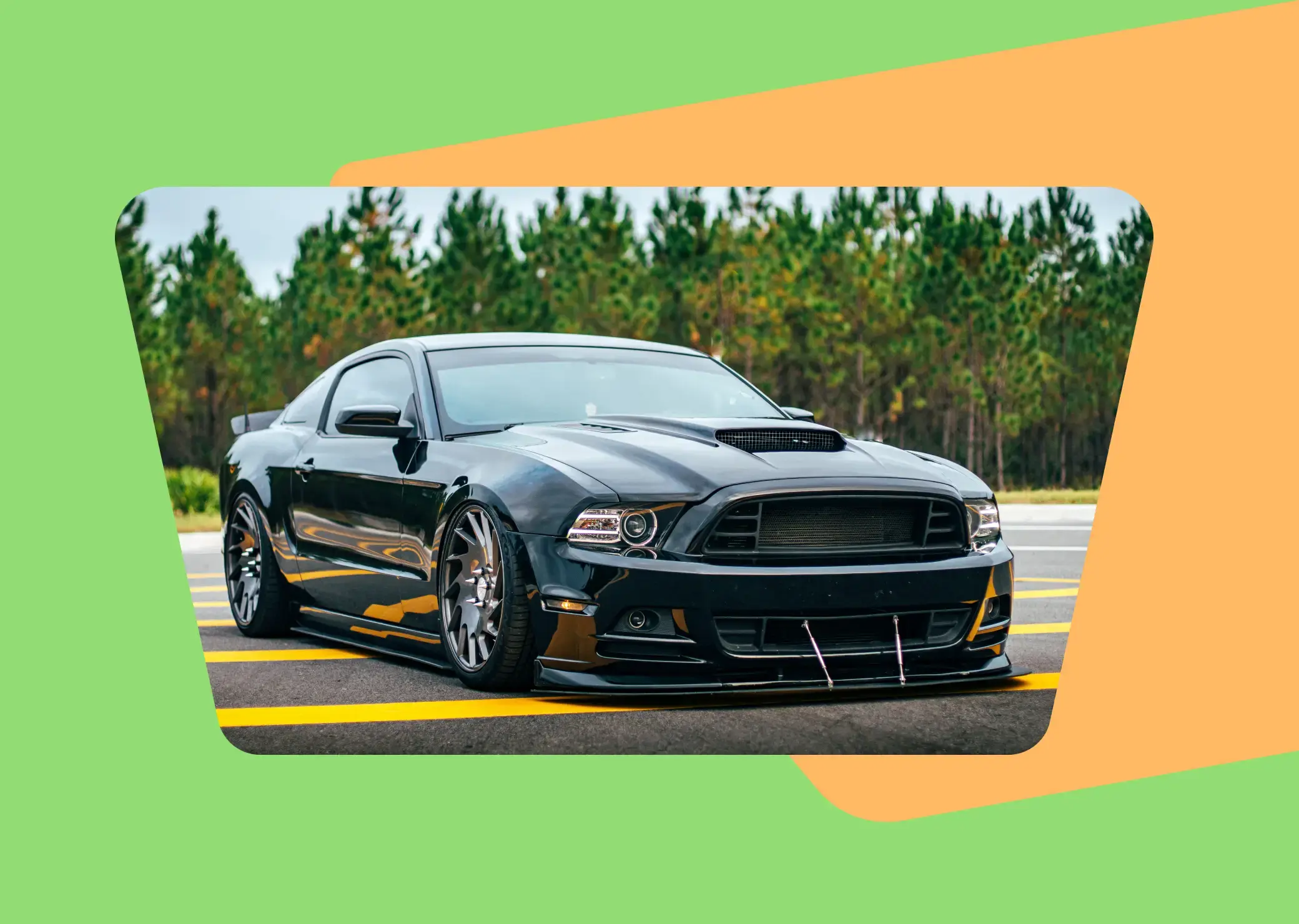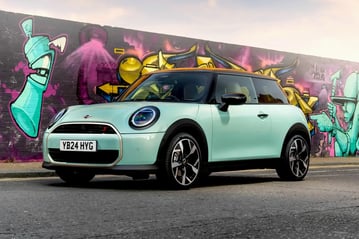- Carmoola
- Blog
- Car Finance
- Car insurance groups explained
- 🗞 Car Finance
- Last updated: Mar 21, 2023
- 9 Min Read
Car insurance groups explained
Written by

Verified by


See how much you can borrow in 60 seconds
| Representative Example | |
|---|---|
| Loan amount | £10,000 |
| Interest rate | 13.9% APR |
| 54 payments of | £246 |
| Total cost of credit | £3,284 |
| Option to purchase fee | £1 |
| Total payable | £13,285 |
When it comes to buying your next set of wheels, you might already have an idea of how much you can afford to spend. But buying the car is just the first step - you also need to plan for how much it will cost to run and look after your car.
Probably the biggest cost other than actually buying the car, is the insurance. There’s no getting away from it, as car insurance is a legal requirement, but how do you know how much your insurance will cost? It depends on a few things, but car insurance groups will give you an idea of what you can expect to pay.
What are the car insurance groups?
In the UK, every car is assigned to an insurance group, from Group 1 all the way up to Group 50. The idea is that these groups give insurance companies a quick and easy way to estimate the risk and cost of insuring different makes and models of cars. Plus, it helps to keep insurance costs reasonably consistent from one insurer to another.
Cars in Group 1 are seen as the lowest risk, and Group 50 are considered the highest risk. A lower insurance group typically means lower insurance costs, and a higher insurance group means more expensive insurance.
When you’re looking at potential new cars, you can check the insurance group online, so you have an idea of how much the insurance might set you back before you hit the road.
What do the letters mean in car insurance groups?
As well as a number from 1 to 50, you might find that some cars have a letter attached to their insurance group. The letter represents the car’s security features.
Here’s what the letters mean:
- A - Acceptable. The car meets all the security requirements for its insurance group
- D - Doesn’t meet requirements. The car doesn’t meet the security requirements for the group, so it’s been placed in a higher (more expensive) group
- E - Exceeds requirements. The car goes over and above the security requirements for the group, so it’s been placed in a lower (cheaper) group
- P - Provisional. Some cars have a P rating because the data for the rating system wasn’t complete when the car was release
- U - Unacceptable. The level of security on the car is unacceptable - an insurance company might insist that the security features are upgraded
- G - Grey import. The vehicle is imported from abroad, so it doesn’t carry a standard rating
How do car insurance groups work?
Cars are placed in particular insurance groups by a Group Rating Panel - which is a panel of experts including members of the Association of British Insurers (ABI) and Lloyds Market Association (LMA).
When a new car is launched, the Group Rating Panel uses information provided by Thatcham Research to decide which insurance group is right for that car. They take these things into consideration:
Price
The price of the car when it’s brand new gives insurers an idea of how much it might cost to replace if the car is stolen or written off
Safety
Cars that do well in Thatcham research / Euro NCAP crash tests, and have advanced security features like Autonomous Emergency Braking (AEB) are considered safer, and so are seen as less of a risk from an insurance point of view
Cost of parts
The panel looks at how much it would cost to replace 23 of the most common parts and body panels for the car, in the event that it would need to be repaired. The cheaper the parts, the lower the insurance group will be
Speed
Faster cars are statistically more likely to be involved in insurance claims, so if the car has a higher top speed and can get from 0-60mph quickly, it’ll likely be placed in a higher insurance group
Repair time
Cars that can be repaired quickly usually fall into lower insurance groups, whereas those that take longer to repair tend to be in higher insurance groups
Security
If a car has built-in security features like an alarm, immobiliser, locking devices for alloy wheels, and a visible VIN number, it’ll be considered a lower risk.
How can I check my car’s insurance group?
Finding out the insurance group for a car is pretty straightforward. There are plenty of insurance group checker tools online, and lots of the big insurance companies and price comparison sites have simple group checkers.
If you’re considering buying a car from a dealer, they should be able to tell you the car’s insurance group.
What else can affect my premium?
A car’s insurance group has a big influence on the cost of insurance - that’s what it’s for, after all - but it’s not the only thing to take into account. When you insure your car, the insurer looks at the level of risk posed by both the car and the driver - that’s you.
Insurers consider these things about you when deciding how much your premiums should be:
Your age
Younger drivers usually have to pay much higher insurance premiums, because having less driving experience means you’re at a higher risk of being involved in an accident. Your premiums should go down as you get older and get more experience under your belt
Your driving history
If you’ve made claims on your car insurance in the past, or if you have any driving convictions (like a speeding ticket, for instance), this means you present a higher risk for insurers, so they’ll charge you a higher premium
Your address
Some areas are seen as higher risk than others, because of crime and burglary rates, so if you live in a postcode where your car is statistically more likely to be stolen or vandalised, you can expect your insurance to be more expensive
Your job
Insurers see some jobs as higher risk than others, because there’s more chance of your car being damaged, especially if you use it for commuting
How can I get cheaper car insurance?
Going for a car in a lower insurance group is one way to keep your insurance costs down, but there are plenty of other things you can try too.
Pay annually
It usually works out cheaper overall to pay for your insurance in a lump sum, rather than spreading it out in monthly payments. This is because monthly payments include a certain amount of interest on top of the insurance cost
Pay a higher excess
Increasing your voluntary excess shows the insurer that you’re unlikely to make small claims that aren’t worth the cost, so they’ll bring down your premium. Just make sure you keep your excess amount realistic, so that if you do have to make a claim, you can afford to pay it
Limit your annual mileage
The further you drive, the higher the chance of being involved in an accident, so if you restrict the number of miles you drive in a year, this can lower the cost of your insurance
Consider telematics insurance
Also known as ‘black box’ insurance, you get some tech installed in your car to monitor your driving. If you consistently drive safely, it can lead to lower premiums over time, so these policies are often popular with new drivers
Build up a no-claims discount
If you go for a year or longer without making a claim on your car insurance, you’ll start to build up a no-claims bonus, which can get you a discount on your insurance. The longer you go without claiming, the bigger discount you get
Improve your car’s security
If you car doesn’t already have security features like an immobiliser and locking wheel nuts, getting them installed can make reduce the risk of your car being stolen, and can bring your insurance costs down
Don’t over-insure your car
Insurance comes with optional add-ons like breakdown cover and car keys cover - these will add to the cost of your insurance, so think carefully about whether you really need them
FAQs about car insurance groups
What are the cheapest car insurance groups?
What cars are in the lowest insurance groups?
Generally, cars in the lower insurance groups are the ones that cost less to repair. They tend to be lower-specification cars with smaller, less powerful engines. These cars tend to be more economical, and easier to repair.
Some of the cars in the lowest insurance groups, and which are therefore among the cheapest to insure, include:
- Hyundai i10
- Fiat Panda
- Dacia Duster
- Kia Picanto
- Toyota Aygo X
- Seat Ibiza
- Skoda Fabia
- Vauxhall Corsa
- Fiat 500
- Hyundai i30
What is the most common insurance group?
Smaller cars like the Ford Fiesta, Vauxhall Corsa and Volkswagen Polo are the most popular - these are usually classed in insurance groups 1 - 6.
Mid-sized hatchbacks like the Ford Focus and Volkswagen Golf are next up, followed by bigger family cats like the Ford Mondeo or Vauxhall Insignia. These cars tend to be in insurance groups from around 10 - 20.
SUVs like the Nissan Qashqai and the Kia Sportage are growing in popularity - cars like these would be classed in insurance groups around 15 - 25.
See how much you can borrow in 60 seconds
| Representative Example | |
|---|---|
| Loan amount | £10,000 |
| Interest rate | 13.9% APR |
| 54 payments of | £246 |
| Total cost of credit | £3,284 |
| Option to purchase fee | £1 |
| Total payable | £13,285 |
Related articles
What Are the Top 5 Used Car Websites in the UK?
Thanks to the internet, searching for a used car in the UK is easier than ever before. You can simply head online, visit a used...
What Is GMFV in PCP Car Finance? Guaranteed Minimum Future Value Explained
GMFV, or Guaranteed Minimum Future Value, is the amount your lender estimates your car will be worth at the end of your PCP...
Does Financing a Car Build Your Credit?
Financing a car can build credit when you make payments on time, but it can damage your score if you miss payments or take on...

.webp?width=832&height=592&name=customer-support%20(1).webp)










.webp?width=400&height=285&name=online-shoppers-with-dog%20(1).webp)


.jpg?width=500&height=356&name=Vintage%20car%20going%20to%20an%20old%20town-1%20(1).jpg)





